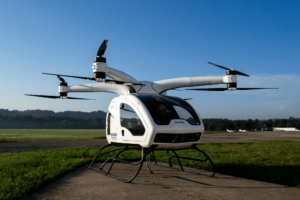We all think about the future and what it will bring for us, our children and our grandchildren. Some even make bold predictions about the future. If we were asked 10 or 20 years ago what we expected in the year 2020, we might have guessed that we’d all be eating synthetic food pills and being served by robot butlers.
Nikola Tesla, the electricity wizard, predicted in 1937 that “within a century, coffee, tea and tobacco will be no longer in vogue.” Alcohol, however, “will still be used,” he claimed. “It is not a stimulant but a veritable elixir of life.” Tobacco use has plunged, but coffee and tea are going strong. Tesla also warned against chewing gum, claiming it could cause “exhaustion of the salivary glands, put[ting] many a foolish victim into an early grave.”
In 2005 futurist and computer scientist Ray Kurzweil predicted that eating will no longer be necessary.
“Nanobots capable of entering the bloodstream to ‘feed’ cells and extract waste will exist (though not necessarily be in wide use). They will make the normal mode of human food consumption obsolete,” he wrote. Maybe that’s a good idea, but it’s likely none of us ever thought “this meal would be so much better if it had no flavor whatsoever and it was just a tiny robot that we injected into our veins.”
Waldemar Kaempffert, a New York Times science editor, had lots of opinions about how different the world would become by 2020, especially when it came to our diets. All food, “even soup and milk,” would be delivered to our homes in the form of frozen bricks. It would never take anyone “more than half an hour to prepare … an elaborate meal of several courses.” And thanks to advances in culinary technology, it would be possible to take ordinary objects like old paper and even “rayon underwear,” and bring them to “chemical factories to be converted into candy.”
Gustav Bischoff, president of the American Meat Packers Association, had only grim forecasts for the 21st century, which he warned would involve a diet of mostly vegetables. Because of a shortage of meat, even the wealthiest people in 2020 would be forced into a life of vegetarianism. Bischoff told a New York Times reporter in 1913 that “living as the low-caste [Asian man] does now, on rice and vegetables, and, like him, slothful creatures, anemic and without initiative.” Aside from his staggering racism, Bischoff felt that the only way to save humanity was to “educate the American farmer to the necessity of raising more cattle.”
We all should have robot butlers or maids by now, right? David Eagleman, the neuroscientist and writer, says “I predicted that 20 years ago, when I was a sanguine boy loving Star Wars, and the smartest robot we have now is the Roomba vacuum cleaner.” Even though he’s holding out for robot assistants, “I won’t be surprised if I’m wrong in another 25 years. Artificial intelligence has proved itself an unexpectedly difficult problem.” As for fears that robots will soon steal all our jobs, Wired magazine isn’t too concerned. As they reported last year, “the problem we’re facing isn’t that the robots are coming. It’s that they aren’t.”
Undaunted by failed predictions of the past, some have some ideas for 2030.
Amazon is already launching drone delivery, and some believe the kitchen of tomorrow won’t need you to notice that your milk is running low or you’re almost out of beer. Containers will send out alerts, on their own, when they’re in need of replenishing.
Sean Raspet, a former flavorist-in-residence at Soylent, recently launched a new company called Nonfood that makes food entirely out of algae. As in, the gross slime that floats on the top of swamps. Pretty soon we’ll all be eating food that isn’t really food, some of which one early review reports tastes like “vinyl, and latex, and the dust of my grandfather’s ashes.” Delicious, NOT!
